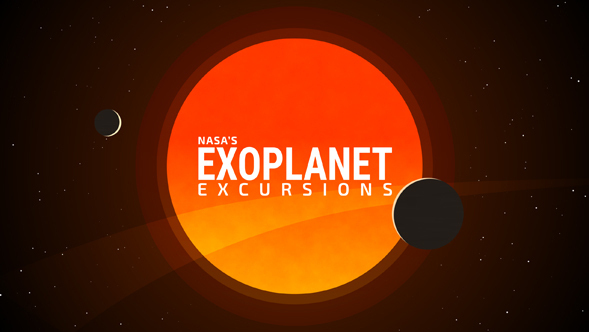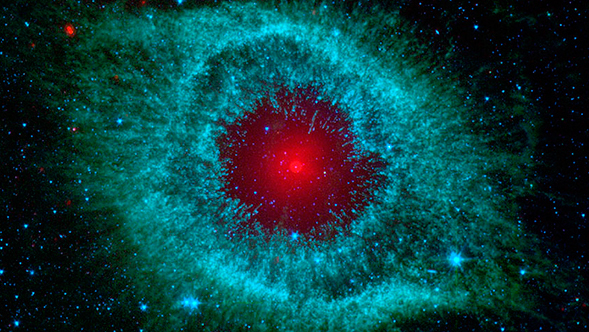
By Robert Hurt | March 30th, 2021
Have you ever wondered what it would be like to actually fly through a system of exoplanets orbiting a distant star, or float next to a space telescope as it studies the universe? I’m not talking about watching a video, but something more immersive that puts you into that space, where you look around and experience what it’s like to be there.
If that sounds intriguing, you should try the updated NASA’s Exoplanet Excursions app developed by the communications team for the Spitzer Science Center at Caltech/IPAC. The app has three modules in both narrative and interactive formats:
- Journey with NASA’s Spitzer Space Telescope (Narrative)
- Observe with NASA’s Spitzer Space Telescope (Interactive)
- Explore the TRAPPIST-1 Exoplanet System (Narrative)
In the latest update (v2.2) of the “Journey with NASA’s Spitzer Space Telescope” interactive module, you’ll glide along with Spitzer in a six-minute 3D journey through the telescope’s 16-year mission, seeing the sky as Spitzer saw it as you follow its orbit around the Sun. The virtual reality experience immerses you in many of the telescope’s incredible observations and discoveries. Then you can try controlling the telescope yourself in the interactive “Observe with NASA’s Spitzer Space Telescope” module.
“Explore the TRAPPIST-1 Exoplanet System” is an immersive, narrated journey—accurate in scale—through the TRAPPIST-1 system of seven Earth-sized exoplanets, many of which were discovered by Spitzer. You can use your controllers to bring up information about each planet, or just look around and see how large these worlds would appear in each other’s skies.
Videos are a powerful and useful medium for showing us things we may never get to see in person, but the technology has its limits. VR hardware can make a difference by not just showing us a movie, but completely immersing us in another place. That sense of “being there” is central to VR’s appeal and its ability to create memorable personal experiences.
Beyond the “wow factor,” VR also can play a critical role in illustrating concepts that are intrinsically immersive in nature. For instance, Spitzer’s field of view is an expansive ring of sky that is challenging to illustrate in a diagram or even a video window. If you can simply look around and see the field of view marked on the entire sky it becomes intuitive to understand how its orientation relates to the position of the telescope and the sun.
NASA’s Exoplanet Excursions can be enjoyed by people of all ages and backgrounds, both in home settings on VR headsets connected to personal computers, as well as outreach settings, such as science centers and special STEM events. The software requires minimal training on the interactive controls, so users can spend more time enjoying the content. The Spitzer Interactive content module was designed for situations where an individual has more time to experiment and learn through interactions.
The latest version of NASA’s Exoplanet Excursions is free on the Steam store and works on a variety of headsets (Oculus Rift/Quest, HTC Vive, Valve Index) connected to a VR-ready personal computer.
If you don’t have access to VR hardware, the updated Spitzer narrative and the TRAPPIST-1 tour are both available as YouTube 360 movies that can be easily viewed on desktops or mobile devices. Using an inexpensive VR adapter for mobile phones you can have nearly the same viewing experience (in 2D) as the full application.
Links and download instructions are available on Spitzer’s VR page.
 My Long-Distance Relationship With Spitzer
My Long-Distance Relationship With Spitzer



